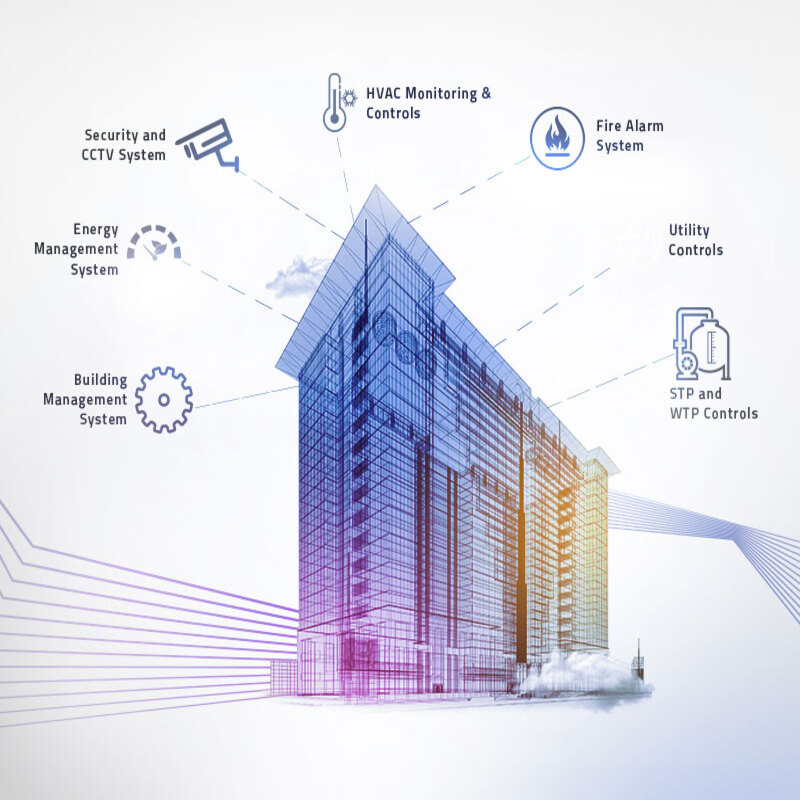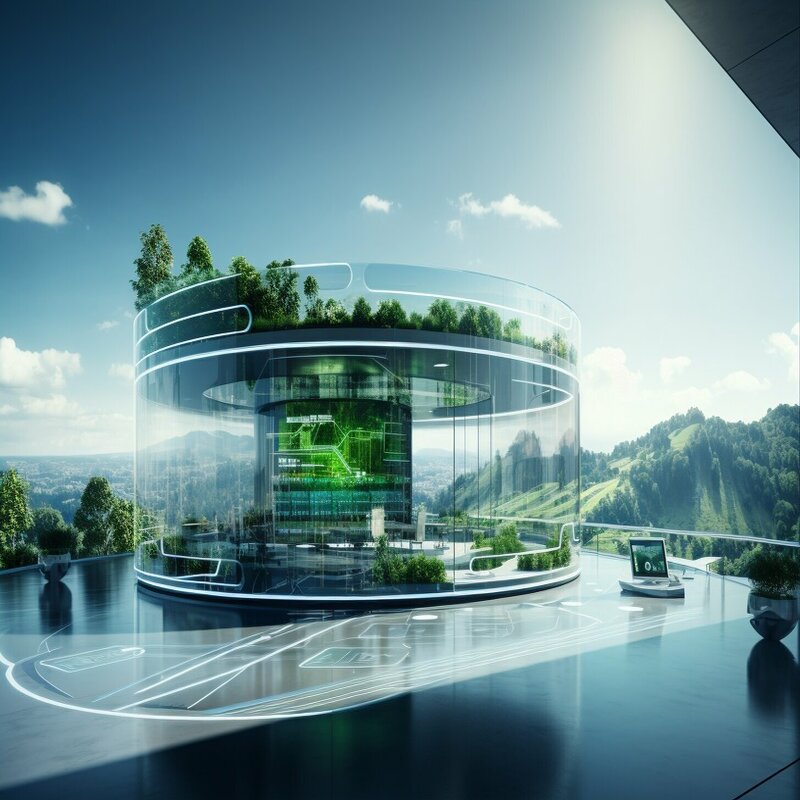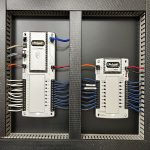Building Automation and Control Systems (BACS) are revolutionizing the way we interact with residential, commercial, and industrial environments. By integrating systems like HVAC, lighting, security, and more, BACS optimize building performance, ensuring comfort, efficiency, and safety. The charm of these systems lies in their capability to provide a seamless interaction between various building operations. Additionally, the proliferation of the Internet of Things (IoT) technologies has further enhanced the capabilities of BACS. As a result, modern buildings are becoming increasingly smart, adaptive, and responsive to the needs of their occupants.
The Essence of Building Automation and Control Systems
Building Automation and Control Systems represent a cohesive network of hardware and software that monitor and control building services. These systems aim to improve the quality of life for occupants while optimizing energy utilization.
Enhancing Occupant Comfort and Safety
BACS play a pivotal role in ensuring occupant comfort by maintaining optimal indoor conditions. For instance, automated HVAC systems can adjust temperature and humidity levels based on real-time data. This flexibility ensures that occupants experience a consistent and comfortable environment without needing manual intervention. Furthermore, automated lighting systems can adjust based on natural light availability, reducing eye strain and enhancing productivity. Importantly, BACS also contribute to occupant safety. Integrated security systems, such as surveillance cameras and access control, offer robust protection against unauthorized entry and potential threats.
Optimizing Energy Usage
One of the primary incentives for adopting BACS is energy efficiency. By intelligently managing energy consumption, buildings can achieve significant cost savings. For instance, automated systems can turn off lights in unoccupied areas, thereby reducing wastage. Additionally, HVAC systems can be programmed to operate at reduced capacity during off-peak hours while maintaining comfort. Transitioning to energy-efficient operations not only lowers utility bills but also contributes to environmental sustainability. Importantly, integrating renewable energy sources, like solar panels, with BACS can further enhance energy efficiency.

Core Components of BACS
Building Automation and Control Systems comprise several interconnected components, each playing a vital role in the overall system’s functionality.
Sensors and Actuators
Sensors are the eyes and ears of BACS, gathering crucial data on various environmental parameters. These parameters include temperature, humidity, light levels, and occupancy. For example, temperature sensors provide data to the HVAC system, ensuring optimal climate control. Humidity sensors, on the other hand, maintain air quality by regulating moisture levels. Occupancy sensors detect the presence of individuals, thereby adjusting lighting and HVAC operations. Actuators are the muscles of BACS, converting control signals into physical actions. For instance, actuators in HVAC systems regulate air flow and temperature settings based on the data received from sensors.
Control Systems and Software
Control systems and software are the brains behind BACS, processing data from sensors to make informed decisions. These systems can be categorized into two levels: Direct Digital Control (DDC) systems and Supervisory Control and Data Acquisition (SCADA) systems. DDC systems handle real-time control tasks, such as adjusting HVAC settings based on sensor data. SCADA systems, on the other hand, provide a higher-level overview, managing multiple DDC systems and ensuring smooth operations. Advanced algorithms and machine learning techniques are increasingly being integrated into these control systems to enhance their decision-making capabilities. This integration allows for predictive maintenance, fault detection, and more efficient control strategies.
Benefits of Integrating BACS
The integration of BACS offers manifold benefits that extend beyond mere automation, encompassing energy efficiency, operational reliability, and enhanced user experience.
Energy Efficiency and Cost Savings
One of the standout advantages of BACS is their ability to significantly reduce energy consumption. By automatically adjusting lighting, heating, and cooling based on real-time occupancy and environmental conditions, BACS eliminate energy wastage. Consequently, this results in substantial cost savings for building owners. Additionally, predictive maintenance facilitated by these systems ensures that equipment operates at peak efficiency, preventing unforeseen breakdowns and associated repair costs. Over time, these incremental savings can accumulate to present a highly attractive return on investment.
Enhanced Operational Reliability
BACS contribute greatly to the reliability of building operations. Proactive monitoring and control features detect potential issues before they escalate into critical problems. For example, an irregularity in temperature readings might indicate a malfunctioning HVAC component, prompting timely maintenance. The integration of automated emergency systems also plays a pivotal role in minimizing operational disruptions. Fire alarms, sprinkler systems, and backup power supplies can be coordinated to ensure occupant safety and business continuity in emergency scenarios.

Modern Innovations in Building Automation and Control
The rapid evolution of technologies continues to shape the landscape of BACS, making systems smarter and more efficient.
Internet of Things (IoT)
The proliferation of IoT has fundamentally transformed BACS, enabling devices to communicate seamlessly. IoT-enabled sensors and devices can transmit real-time data to a central control system, allowing for more nuanced and coordinated operations. For example, IoT-enabled smart thermostats can learn user preferences over time, automatically adjusting settings to optimize comfort and efficiency. The ability to remotely monitor and control building systems through IoT devices also offers unparalleled convenience, allowing managers to make informed decisions without being physically on-site.
Artificial Intelligence and Machine Learning
Artificial Intelligence (AI) and Machine Learning (ML) are increasingly being integrated into BACS, bringing a new level of intelligence to automation. AI algorithms can analyze vast amounts of data generated by building systems, identifying patterns and optimizing operations. For instance, machine learning models can predict future energy consumption trends, allowing for preemptive adjustments. AI can also facilitate fault detection, diagnosing issues based on historical data and patterns observed in system behavior. Additionally, adaptive learning algorithms enable BACS to continuously improve their performance over time, becoming more efficient and reliable.
Challenges in Implementing BACS
Despite the numerous advantages, implementing BACS comes with its share of challenges, ranging from technical issues to cost concerns.
Technical Challenges
The integration of BACS involves complex technical considerations, particularly in retrofitting existing buildings. Legacy systems might not be compatible with modern automation technologies, necessitating substantial upgrades. Additionally, the interoperability of different systems poses a significant challenge. Ensuring that various HVAC, lighting, and security systems communicate effectively requires sophisticated integration protocols. Cybersecurity is another critical concern, as the interconnected nature of BACS makes them vulnerable to cyberattacks. Robust security measures must be implemented to safeguard data and prevent unauthorized access.
Cost Considerations
The initial cost of installing BACS can be prohibitive for some building owners. This includes expenses related to hardware, software, and system integration. However, considering the long-term savings in energy costs and enhanced operational efficiency, the investment often proves worthwhile. Financing options, such as performance-based contracts, can help mitigate the initial financial burden. In such arrangements, the service provider covers the upfront costs, recovering their investment from the savings generated by the BACS over time.

Integrating Human-Centric Design in BACS
A growing trend in BACS is the emphasis on human-centric design, prioritizing the needs and well-being of occupants.
Enhancing User Experience
Modern BACS aim to create environments that are not only efficient but also conducive to occupant well-being. Personalized control over lighting, climate, and other parameters ensures that occupants can tailor their environment to their preferences. For example, individual workspaces can be equipped with personalized climate control, enhancing comfort and productivity. Additionally, adaptive lighting systems that mimic natural daylight can improve mood and reduce fatigue. By focusing on user experience, BACS can contribute to higher satisfaction and better health outcomes for occupants.
Inclusive Design and Accessibility
BACS are also increasingly focusing on inclusivity and accessibility, ensuring that buildings cater to diverse user needs. This includes features like voice-activated controls for individuals with mobility impairments, ensuring that everyone can interact with the building systems effectively. Furthermore, visual and auditory cues can be integrated to assist occupants with sensory impairments. Designing for inclusivity not only enhances user experience but also ensures that buildings are compliant with accessibility standards and regulations, promoting a more equitable environment.
Conclusion
Building Automation and Control Systems are at the forefront of transforming modern buildings into intelligent, efficient, and responsive environments. By integrating technologies such as IoT, AI, and machine learning, these systems offer numerous benefits, including enhanced energy efficiency, operational reliability, and improved occupant comfort. While challenges in implementation exist, the long-term advantages often outweigh the initial investments. As we move towards a future of smart cities and sustainable development, the role of BACS will become increasingly pivotal. Emphasizing human-centric and inclusive design will further enhance their impact, creating environments that cater to the diverse needs of all occupants. The continued evolution of BACS promises a future where our built environments are not only more efficient but also more adaptive and responsive to the needs of their users.


